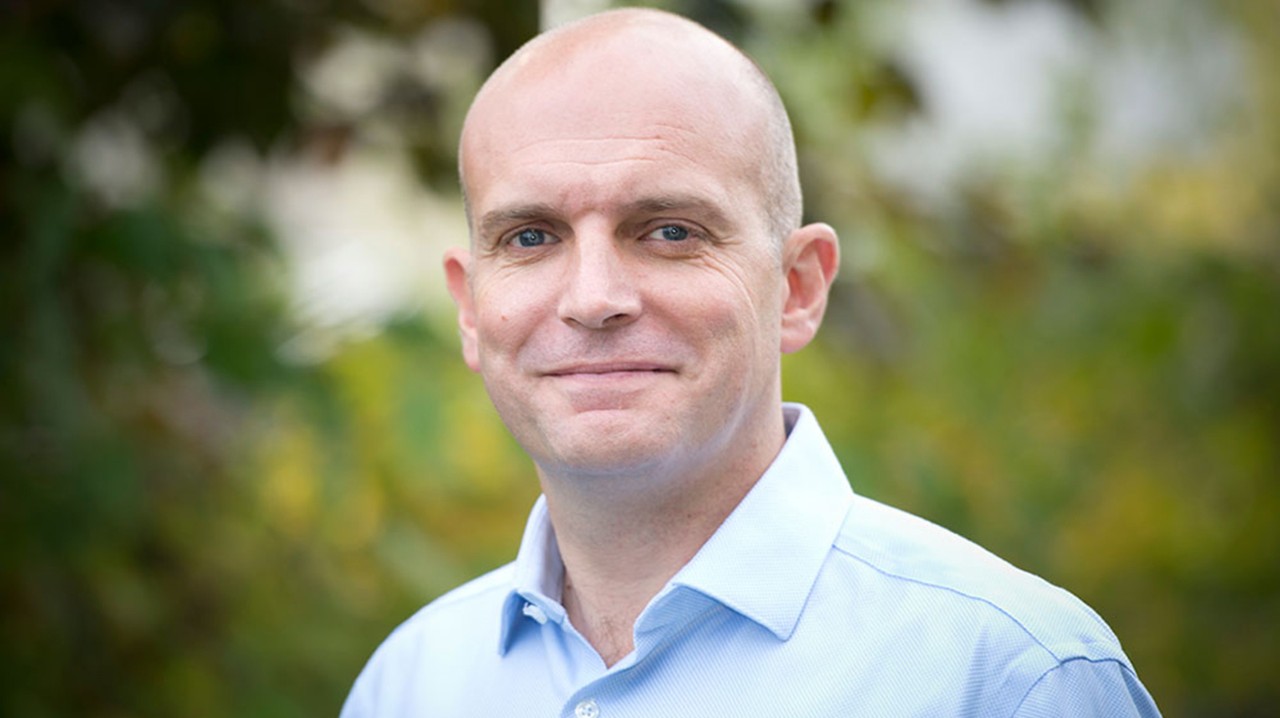
A perennial debate in the world of accountancy is whether there is a significant difference between the role of an accountant in a commercial business and one in the not-for-profit sector.
Paul Taylor FCCA, finance director at the National Society for the Prevention of Cruelty to Children (NSPCC), has experienced both ends of the spectrum. After starting his career in the treasury team of British Coal’s superannuation fund, he worked in various companies including Tate & Lyle and Virgin Direct.
‘Some things are very similar to working as an accountant in the private sector,’ he says. ‘Cash is king, for example, and the controls are the same. But large charities can be extremely complex and while the need for efficiency might be the same, the drivers can be very different.
‘In the private sector, there are objective measures of success such as return on investment or operating income. For example, if you had capital rationing, you would work through your list of projects in order of expected ROI and stop when the investment pot was depleted. At a charity, there is no single measure of “good” or “necessary” – everything we do is “good” and “necessary”. So making the choice about where you spend is really difficult. That is the fundamental difference.
‘We could spend £100,000 on Childline, which would pay for our trained counsellors to answer around 25,000 calls, or we could invest a similar amount to have our practitioners deliver specialist services to a much smaller number of children who have suffered from domestic or sexual abuse. How do you choose? In the commercial world the decisions are often a lot clearer, and some of them are easier to make.’
‘We could spend £100,000 on Childline, or we could invest a similar amount to deliver specialist services to a much smaller number of children who have suffered abuse. How do you choose?’
Key campaigns
In addition to Childline, which answers more than a million calls a year from vulnerable children, the NSPCC carries out direct work to protect children today and prevent child sexual abuse tomorrow, by:
- visiting schools to raise awareness and encourage children to speak out if they need help
- providing a helpline for any concerned adult to turn to for confidential support
- supporting parents and carers by equipping them with the support they need to protect their children from abuse
- running therapeutic services to support recovery from abuse
- sharing research and evidence to find the best ways to protect children and prevent abuse.
The charity has launched a campaign, WildWestWeb, calling for an independent regulator with the power to investigate and fine social networks that fail to protect children against online sex crimes.
It has worked with other charities to persuade the government to officially recognise in the Domestic Abuse Bill that young people are also victims of domestic abuse. The coalition is now pushing to have local authorities deliver statutory, community-based services to help children recover from the trauma of domestic abuse.
The NSPCC also operates the School Service, which delivers a safeguarding programme, ‘Speak out Stay safe’, for 5–11-year-olds. In response to the pandemic, it has developed virtual assemblies that primary schools can use in class along with supporting resources for teachers and pupils.
Accountability gaps
Taylor joined the NSPCC in 2007, just 18 months after the organisation merged with Childline. He found an organisation filled with ‘wonderful people’ but one that needed some attention.
‘At that time the finance area wasn’t working as it should. The roles and responsibilities weren’t clear enough. I sat down with each member of the team and discussed what they did, their ideas and their frustrations.’
Taylor emphasises the importance of respecting people’s differences and professional opinions. ‘People need to understand how their role fits into an organisation and that their contribution adds value to its beneficiaries,’ he says. ‘It is important members of the team can believe and can see they bring something personally to their role and to the organisation and therefore to the individuals we support.’
Lean approach
Taylor is a strong advocate of lean thinking, which he sees as particularly relevant to the not-for-profit sector. ‘If people give money to a charity they need to know that the maximum is going to the front line cause,’ he says. ‘You need to be as efficient as possible.’
The NSPCC can certainly attest to that; the charity spent £86.8m helping children, young people and families in the year to March 2020, out of total income of £117.6m – 80p of every £1 spent goes to the front line.
Well over half of the staff costs in finance and procurement have been taken out since Taylor joined, and his team now numbers over 30 full-time employees. He introduced finance business partners, integrated within the business to support the directorates and decision-making. He also moved away from a rigid, one-size-fits-all procurement process to a procurement principles approach, which draws from the organisation’s values, behaviours and charitable purpose.
In addition, layers of management have been removed to create a flat structure – an idea he adds that he ‘nicked’ from his time at Virgin Direct. ‘Lean focuses on people doing the job, rather than on senior managers,’ he says. ‘It’s about making people more effective, and owning what they’re doing.’
This is apparent in the way he talks about the NSPCC systems he inherited when he joined. ‘They were basic, but did what we needed them to do. We didn’t need a new IT system; we needed people to understand better what the existing systems could do.
‘When I recruit someone there is always a focus on their understanding of data. Accountants should live and breathe data, but the way they use it depends largely on their own experience.’
Taylor adds that the charity might move to a fully cloud-based system eventually, ‘but I don’t want to change for the sake of it because the benefit to the organisation would be marginal. What we have is good enough.’
Coping with Covid
The Covid-19 pandemic, of course, has added entirely new challenges into the mix. Operationally, says Taylor, the transition to lockdown was relatively smooth.
‘We had a good continuity plan in place because we’d put the work in historically to our systems and processes. We were up and running within 24 hours of the lockdown announcement,’ he says. ‘And we completed our annual audit pretty much within the pre-pandemic timeframe, as well as delivering to our usual monthly and quarterly cycles since lockdown.’ Taylor is quick to praise his team for these achievements.
The full impact in terms of income remains to be seen. The NSPCC has not been hit quite as hard as some other charities, says Taylor, because it does not have retail shops. But the cancellation of fundraising events will have significant implications.
‘If people give money to a charity they need to know that the maximum is going to the front-line cause. You need to be as efficient as possible’
CV
2007
Finance director, NSPCC
2006
Deputy director of corporate services, Specialist Schools and Academies Trust
2000
Head of finance and procurement, Help the Aged
2000
Global systems and reporting manager, Tate & Lyle
1998
Group accountant, Virgin Direct
1996
Group finance manager, Sea Team
The pandemic has affected the pattern and volume of donations across the sector. According to research by the Charities Aid Foundation during the first weeks of the pandemic, 53% of charities said that donations had decreased, and half said that they could not survive for more than a year in their current form if no extra help was available from government or elsewhere.
Increased demand
Demand for some charities’ services increased during lockdown, which spilled some charities into a catch-22 situation where furloughing staff became a financial necessity but more staff than before were needed to meet demand.
Since the start of lockdown until the end of September, the NSPCC answered more than 40,000 contacts to its helpline from adults with concerns for the wellbeing of a child. Figures peaked in May, when the number of contacts was 48% higher than the pre-lockdown average, and the number of contacts remains high, with contacts in September up 24% on pre-lockdown levels.
‘As an organisation we have coped well, and the dedication of our staff and volunteers has been amazing,’ says Taylor, adding that the pandemic ‘has given us the opportunity to rethink how we do things, such as transferring some of our services to a virtual world, or providing some services on a country-wide basis, rather than being building-based’.
A key development has been how the Childline ‘personal inbox’ service has been run during the pandemic, providing children with their own NSPCC email account through which they can contact the charity.
‘That service used to be run from our physical ChildLine locations but has evolved to be run by volunteers working from home,’ says Taylor. ‘It has allowed us to think about a volunteering model that has a wider geographical reach.’
The Childline call centre, though, has to be run on an in-person basis with supervisors available to help when needed. ‘It’s challenging helping children at the best of times and Covid has been a real test,’ Taylor says. ‘Not all children and young people interact well virtually and even with those who do, the interactions aren’t necessarily the same.’
The fundraising challenges remain and Taylor says that the next year will be critical. ‘We are continuing with some of our fundraising events on a virtual basis, to raise much needed funds to support our work,’ he says, ‘but we are concerned how long people will want to keep attending virtual events.’
For the not-for-profit sector and those who rely on their work, the stakes are higher than most.




